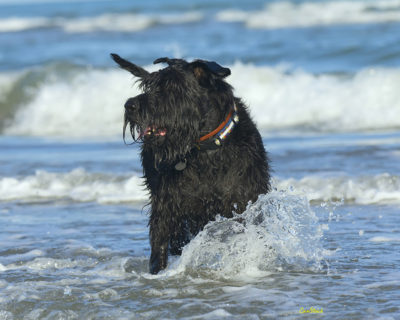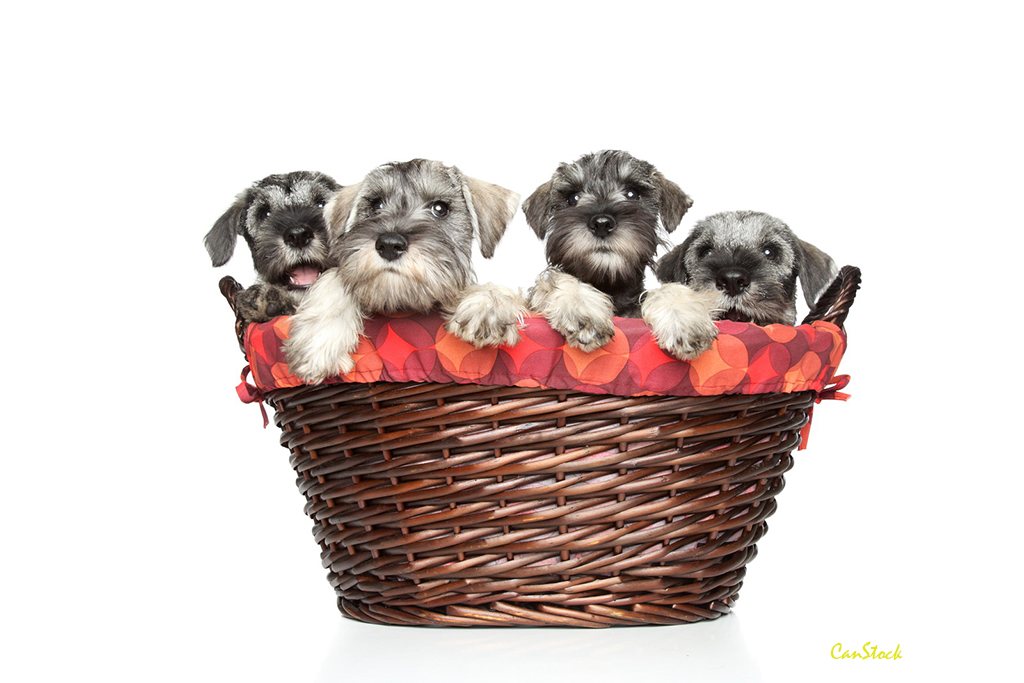
Initially bred as farm dogs, Standard Schnauzers assisted with the workload like hauling wood and killing varmints while acting as security to outsiders and giving unconditional love to their family. The first lineage of the Schnauzers were thought to have been farm dogs during the middle ages. The isolation of communities allowed for the breeding of a strong working companion and guardian.
During the 19th century, German’s (they do love their dogs) bred the native with the gray Wolfspits and black Poodle to acquire the salt and pepper coat and of course a coat without the salt (who needs it anyway) or what we call just plain black. The early versions of this new breed were shown as Wire-haired pinchers, but were later called Schnauzers for their distinct muzzle.
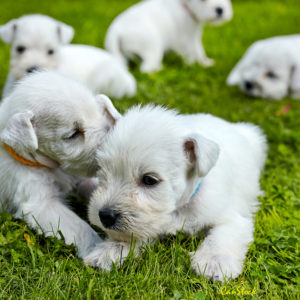
As hardworking land managers desired their look and temperament, folks started thinking. At some point, they decided to make bigger and smaller versions from the standard. Those Germans, always experimenting.
Crossing the Wire-haired Pinschers with black Great Danes bred the Giant Schnauzer. The Giant Schnauzer is aptly named, as the males are quite a bit larger than the standard. Their robust stature and facial hair make then kingly, especially in pure black. These guys are excellent work dogs or police dogs as they are efficient trackers. The alpha type personalities need to be dominated to ensure they know their place and fulfill their role in the pack hierarchy.
The Miniature Schnauzer was bred as a ratter by crossing the Standard Schnauzer with smaller breeds in Germany in the mid 19th century. As ratters, they are energetic and quick; they will follow a furry varmint into the hole. Unlike Westies who can dig themselves underground and require being dug out, these guys will unearth the burrowing critter.
The three distinct breeds have many commonalities besides their distinguished looks. They have a tight wiry coat with a soft, close nit undercoat. The Schnauzer may not be the best companion for those new to us canines as they have such strong personalities, they could dominate the household. Even the little guys can run things if humans are not careful. They require lots of attention and need to be trained. An untrained Schnauzer can destroy things when left alone, or when mistreated. If you are good with dogs and can let your new companion know their place in the family hierarchy, this loving friend will satisfy you.
If you have an alpha male, make sure you are dominant and consistent without harsh treatment, but give a good bite on the nose when necessary. I went after Johnnie when I was four and he had me down on my back in no time. I tried to bite, but he grabbed me by the muzzle and bit me on the snout. I immediately calmed down as again, he maintained alpha status in the house. Now, I am not a big dog, but neither is the Schnauzer, so to all you humans, do what you have to do when required.
As much as there are commonalities across the breeds, they do differ.
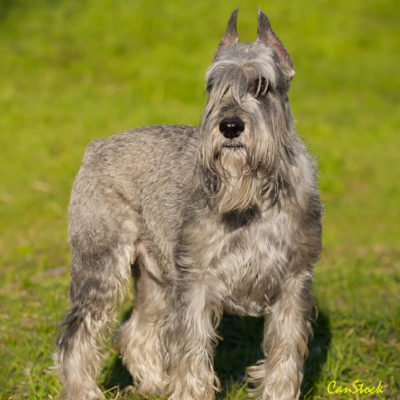
Standard Schnauzer
Males: 18.5-19.5 inches at withers, 31-44 lbs.
Females: 17.5-18.5 inches at withers, 31-44 lbs.
Destructive when ignored
Good apartment dog as long as regularly exercised
Can take time and effort to train, especially house train
Wary of strangers
Doesn’t like being alone
To see the AKC standards for Standard Schnauzer click here
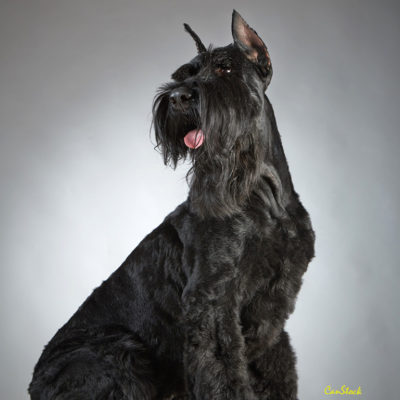
Giant Schnauzer
Males: 25.5-27.5 inches at withers, 60-80lbs.
Females: 23.5-25.5 inches at withers, 55-75 lbs.
Not a good apartment companion
Not good in noisy environments
Low tolerance to hot weather
Shedder
Not good around children
Must be socialized to people and other dogs when young
To see the AKC standards for Giant Schnauzer click here
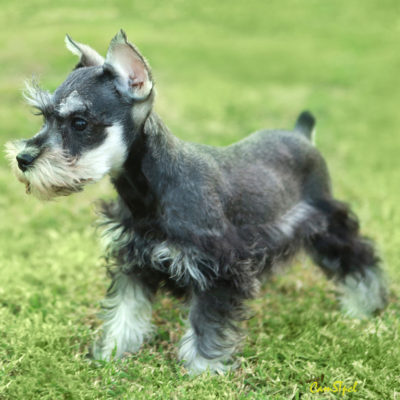
Miniature Schnauzer
Males: 12-14 inches at withers, 12-20 lbs.
Females: 12-14 inches at withers, 12-18 lbs.
Alert, active disposition
Great apartment dog as long as they get daily walks<–plural
Moderately friendly with kids, dogs and strangers
Very playful
Non-shedder, easy to groom
o see the AKC standards for Miniature Schnauzer click here
Schnoodles
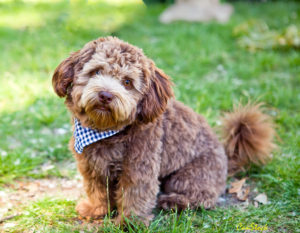
Schnoodles are a mixture of a poodle and a schnauzer which can result in a variety of different offspring that may or may not look like either parent. Sometimes when you have a litter, the puppies all have different looks, some with fur, some with hair, coloration, size, demeanor, there are so many choices, I need a nap.
Now the question is do we have a poo or a doodle. An oodle sounds like a doodle, but if poos are small and doodles are big, then a miniature schnoodle bred with a toy or miniature poodle would be a poo. If there is another reason let me know and we can open it up for discussion.
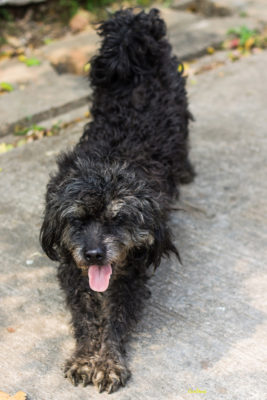
Regardless of size, schnoodles require a lot of time and effort. They will need to be walked and exercised regularly. Medium and small versions can be good apartment pets, but will require daily outdoor activities. If you have yard with a doggy door access your schnoodle will be happy. As both breeds are large and independent, humans should pay close attention when defining of the social hierarchy when your new schnoodle is alpha male. I am speaking from experience here. I challenged Johnnie when I was four and keep pushing the envelope with him after spending time at Joanna’s place, but he doesn’t give an inch on that end. If you’re not like Johnnie, then a larger schnoodle may not be you best choice. If you can befriend your new companion and be dominant, this friend will be a great watchdog, family member and play friend. And they can be quite fun.
